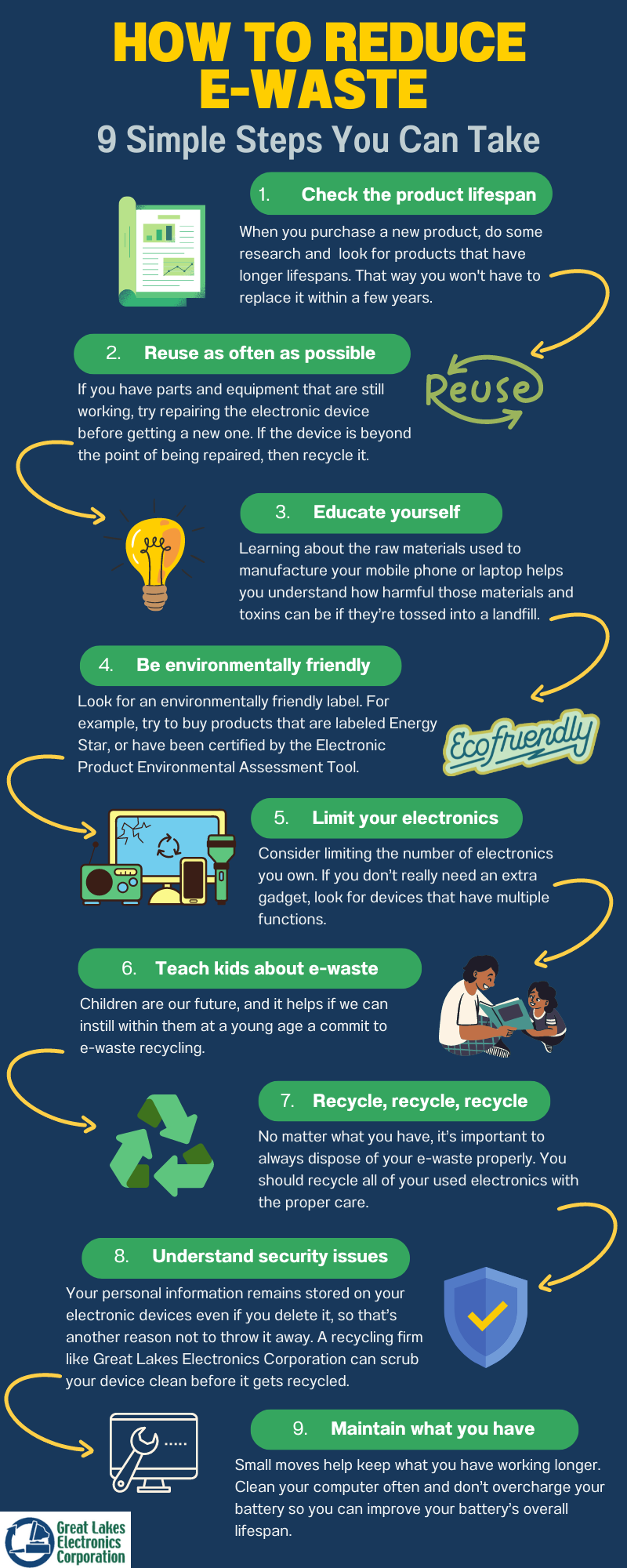Recycling Lives Services Fundamentals Explained
Recycling Lives Services Fundamentals Explained
Blog Article
Examine This Report on Recycling Lives Services
Table of ContentsRecycling Lives Services Fundamentals ExplainedThe 9-Minute Rule for Recycling Lives ServicesA Biased View of Recycling Lives ServicesThe Single Strategy To Use For Recycling Lives ServicesThe Definitive Guide to Recycling Lives Services

Furthermore, all Oxfordshire regional authorities approve vapes and e-cigarettes as a different kerbside collection. Just how they are collected in each area varies slightly; check you have the proper details for your area.
Portable batteries the kind you locate in little portable gadgets can additionally be reused at the kerbside however not inside any of your bins. Bigger stores that offer batteries likewise have collection factors for recycling old batteries.
Examine This Report about Recycling Lives Services
Older-style filament or halogen light bulbs can be disposed of in your basic rubbish bin at home. Some Do it yourself shops additionally have collection points for light bulbs.

The Buzz on Recycling Lives Services
Electrical products are broken down into separate pasts so that the various products they are comprised of can be eliminated and reused. Waste recycling centres are for use by homeowners only and can decline waste from commercial sources. Little organizations and investors have a task of treatment under this plan, which implies they likewise have to follow the WEEE regulations.
E-waste, digital waste, e-scrap and end-of-life electronic devices are terms often used to define used electronics that are nearing completion of their useful life, and are thrown out, contributed or offered to a recycler. The UN specifies e-waste as any kind of disposed of products with a battery or plug, and includes toxic and unsafe materials such as mercury, that can present severe threat to human and environmental health.
A Biased View of Recycling Lives Services
Only 17.4% of this electronic waste, consisting of a mixture of dangerous compounds and priceless products, will be taped as being effectively gathered, dealt with and reused - https://www.figma.com/design/nsgzwVfQaiGTixdFNx262l/Untitled?node-id=0-1&t=3QbQXflqeLec3YH5-1. Several initiatives are taken on to tackle this expanding issue, however none can be totally effective without the active duty and proper education of consumers

Extracting discarded electronics produces 80% less discharges of carbon dioxide per device of gold contrasted with mining it from the ground. In 2015, the extraction of raw materials index represented 7% of the world's energy consumption. This implies that moving towards making use of more secondary basic materials in electronic products might help significantly in reaching the targets laid out in the Paris Agreement on climate change.
Not known Facts About Recycling Lives Services
When the carbon dioxide released over a gadget's life time is thought about, it mainly occurs throughout production, prior to customers purchase an item. This makes lower carbon processes and inputs at the manufacturing phase (such as usage recycled raw materials) and product lifetime essential components of overall environmental influence.
Also in the EU, which leads the world in e-waste recycling, just 35% of e-waste is formally reported as appropriately accumulated and recycled. Around the world, the average is 20%; the continuing to be 80% is undocumented, with much ending up buried under the ground for centuries as garbage dump. E-waste is not biodegradable. The lack of reusing taxes the worldwide digital sector and as devices become a lot more numerous, smaller and much more complicated, the concern rises.
The continuing to be mass of e-waste mainly plastics tied with steels and chemicals postures an extra intractable problem. A new vision for the production and consumption of digital and electric items is needed. It is easy for e-waste to be framed as a post-consumer problem, but the concern incorporates the lifecycle of the tools every person makes use of.
Report this page